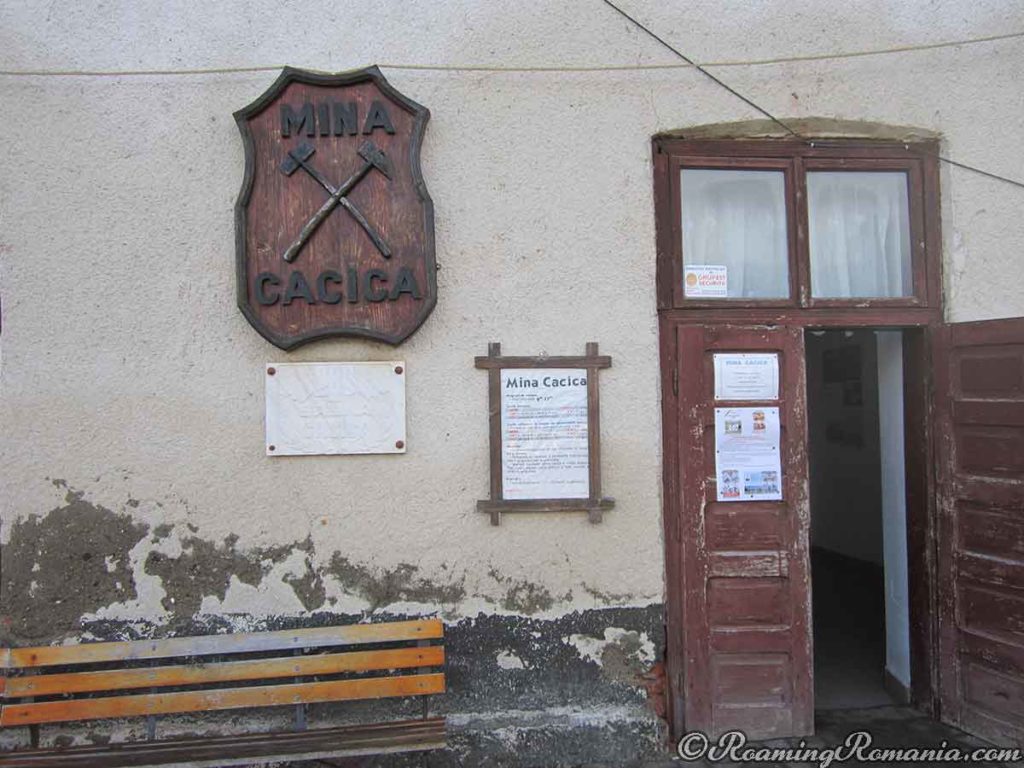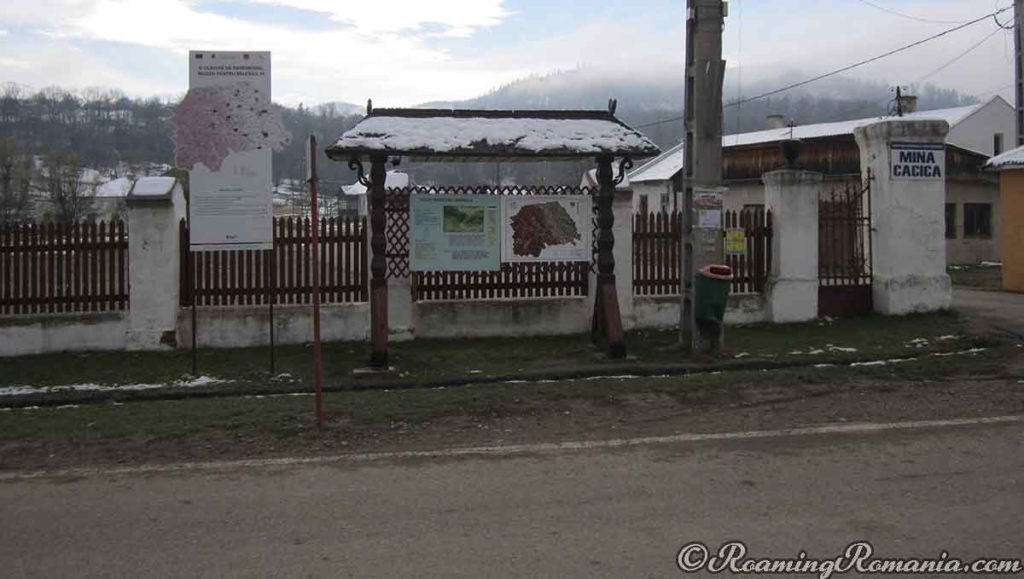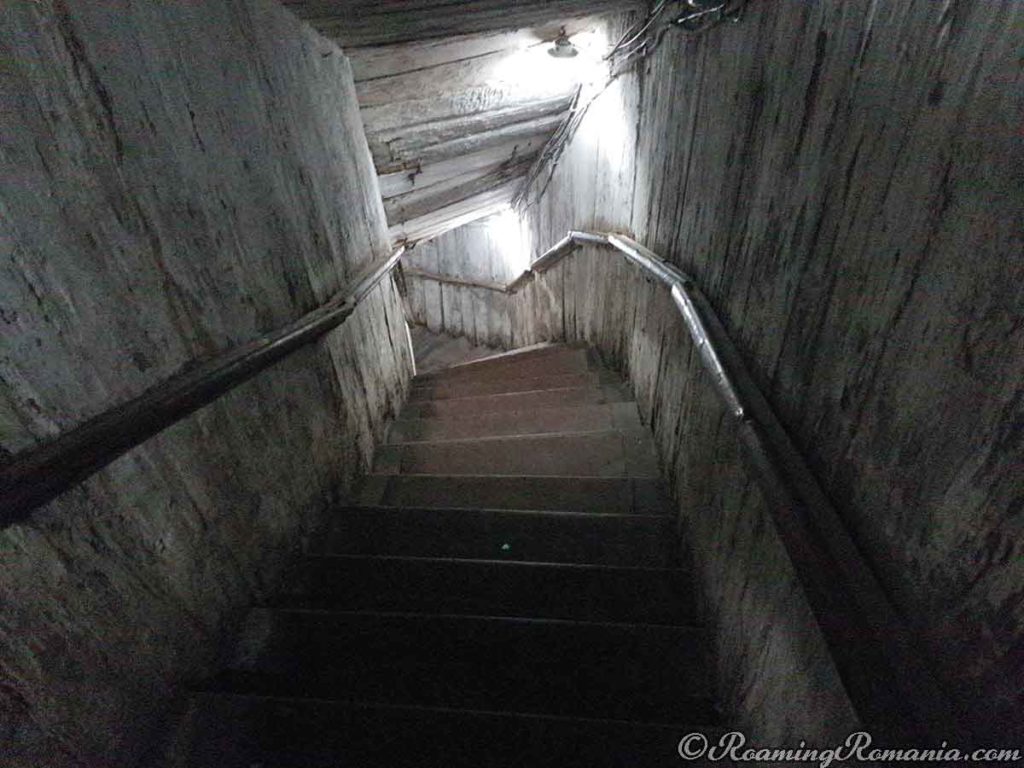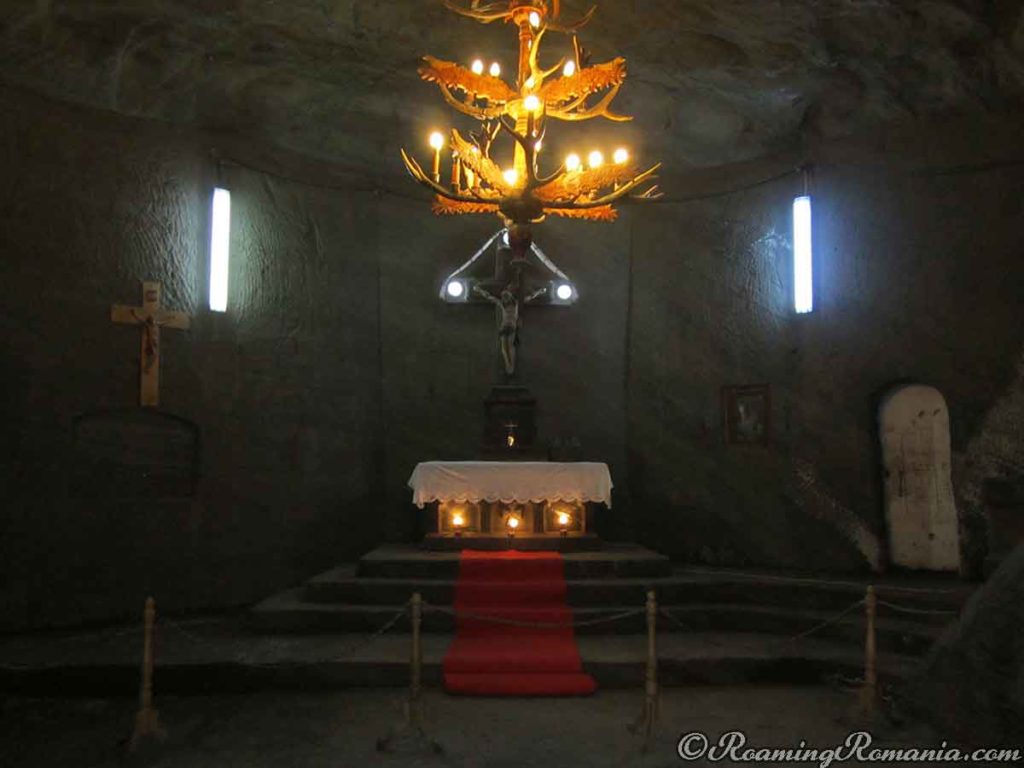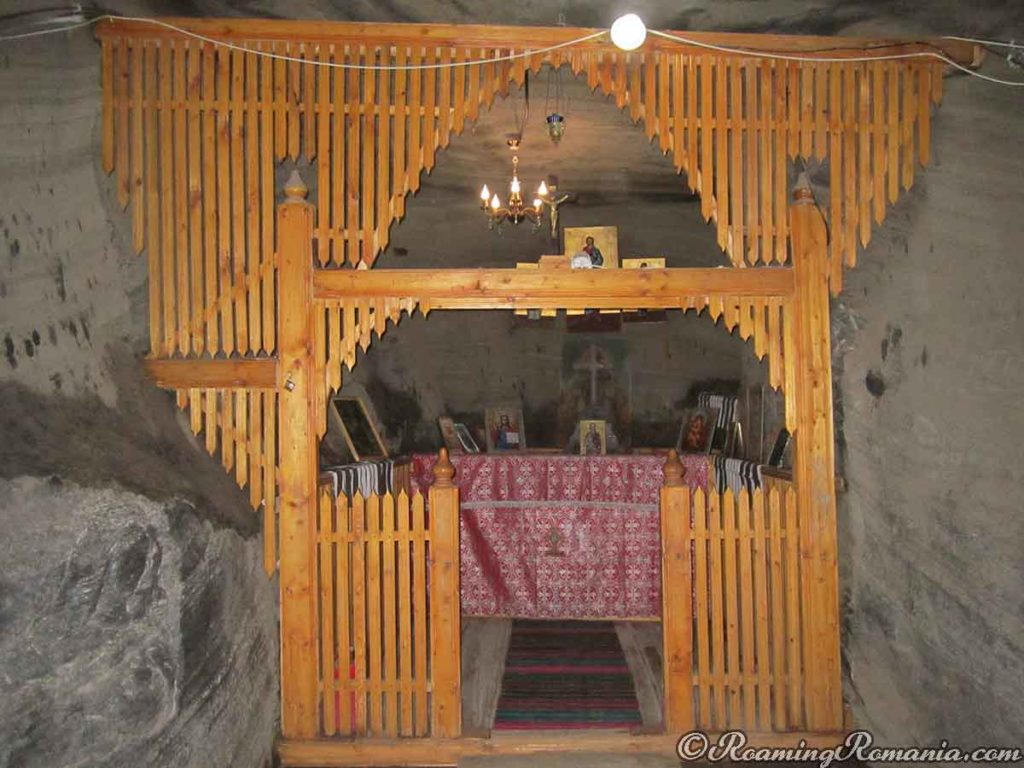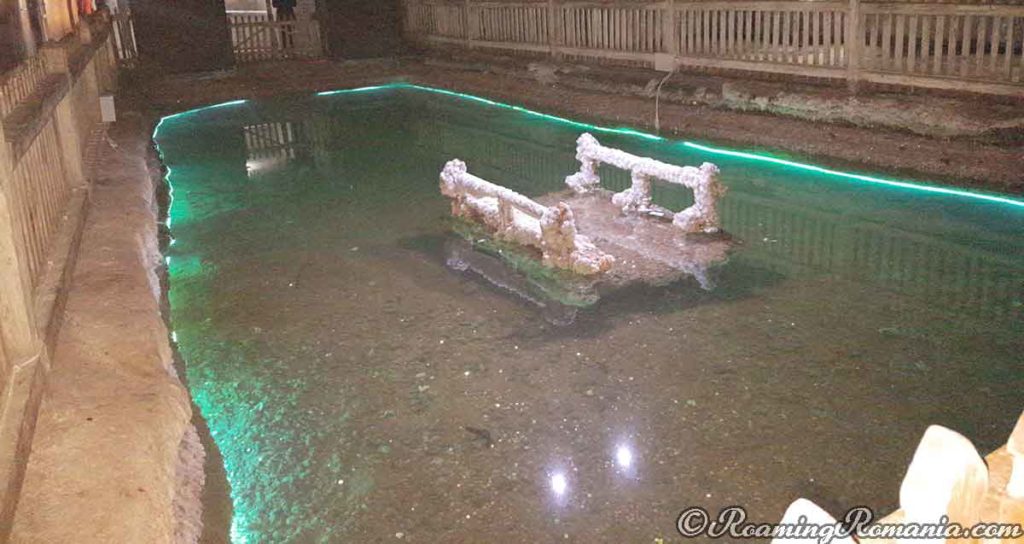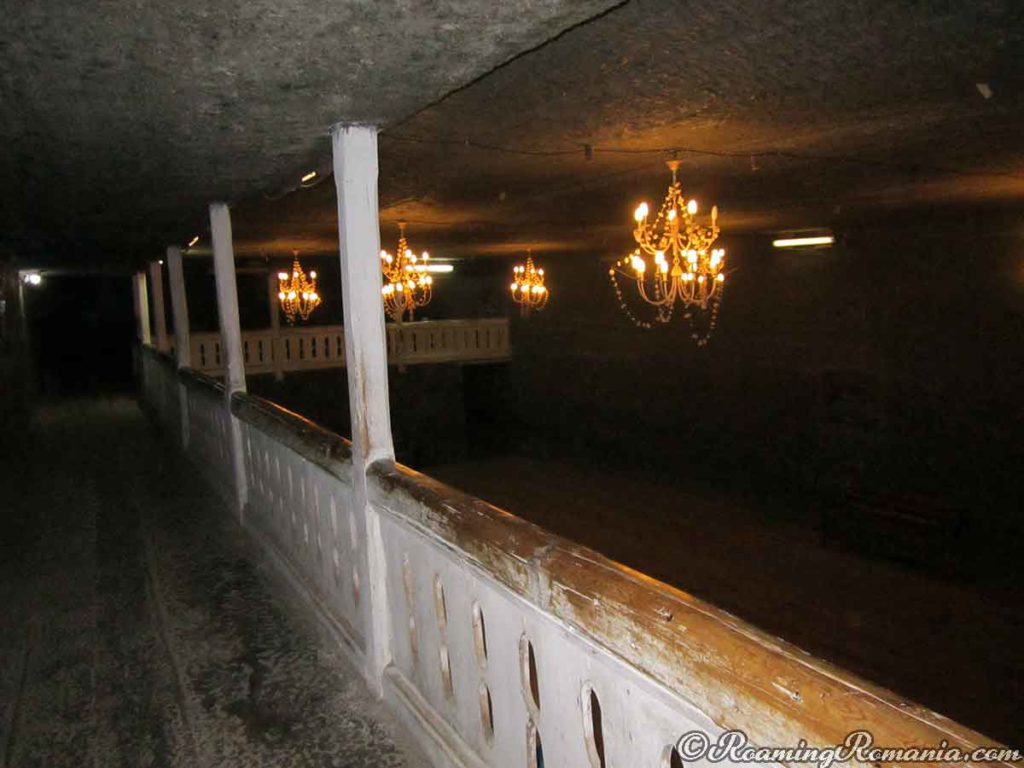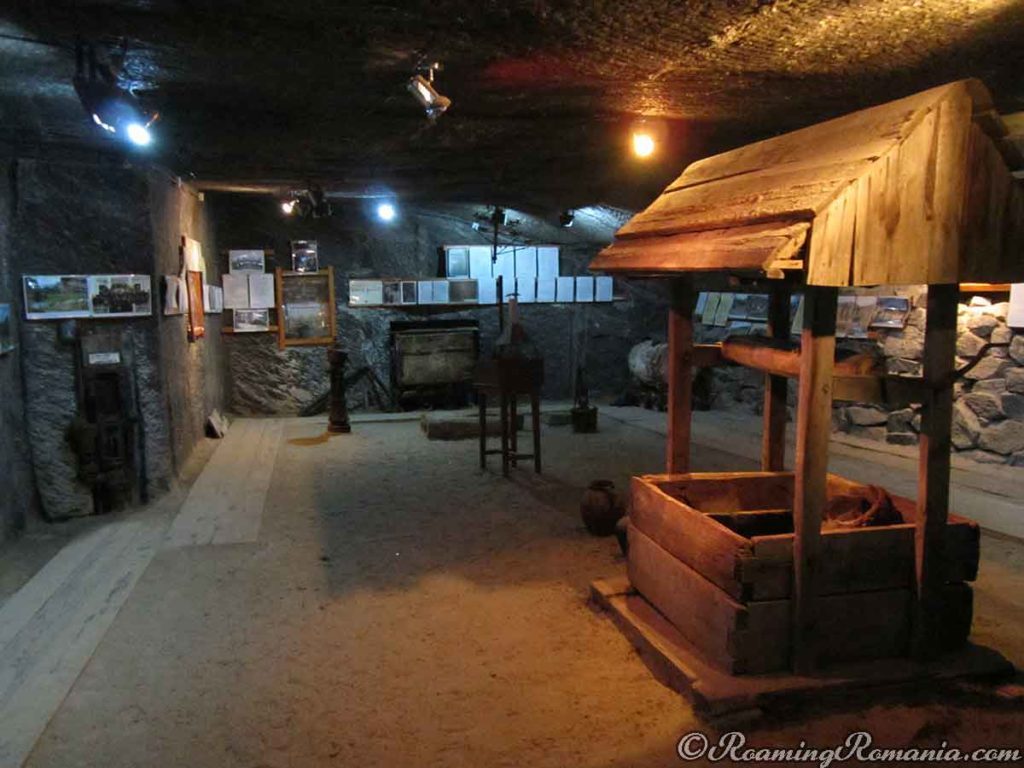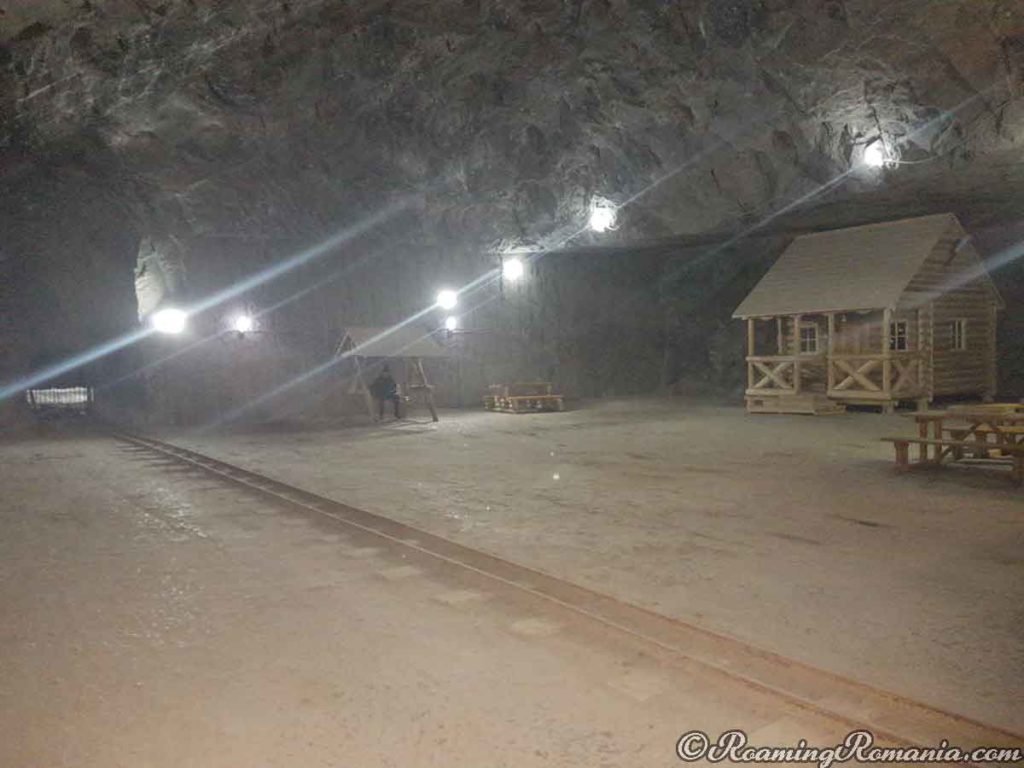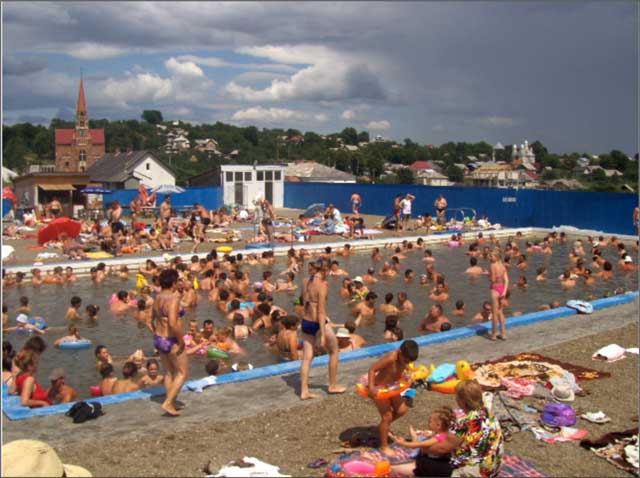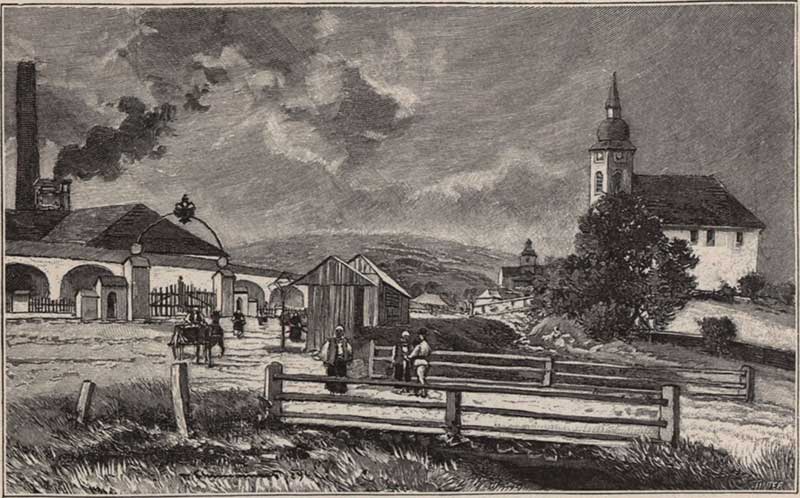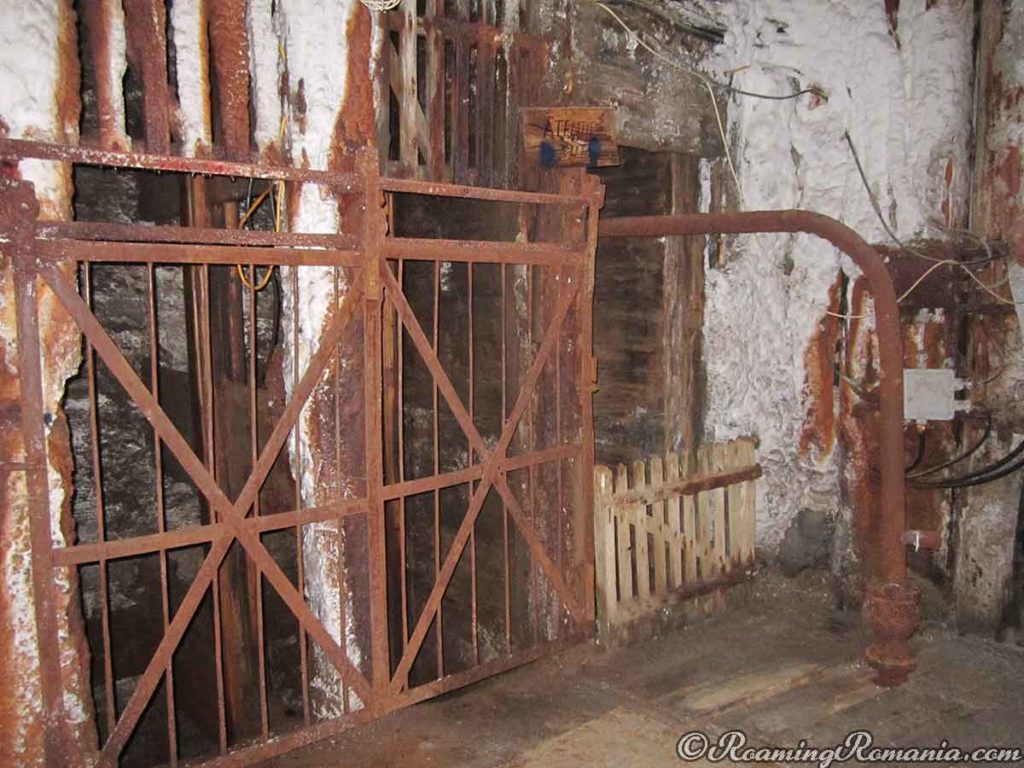Cacica Salt Mine – Visitor Information
When you’re planning to visit the Cacia Salt Mine it’s best to prepare ahead of time so that you can get the most enjoyment out of your trip. We’ve compiled all the information you need to know ahead of time so that your exploration of the mine will go as smoothly as possible.
Location, Hours, and Admission
The Cacica Salt Mine (Salina Cacica) is a salt mine located in the Village of Cacica, in the Cacica Commune in North Eastern Romania. The salt mine is found directly across the street from the Basilica Assumption (Cacica’s Catholic Chruch).
The Mine is Open for Visitation: Year-Round – 7 days a week (Sun-Mon) from 9:00 am – 5:00 pm. Price for accessing the mine is 10 lei for Adults, and 5 lei for kids 3-14. You can buy bulk passes (minimum 5 days) for 8 lei/day. The bulk passes are mainly used for individuals seeking to do healing therapies inside the mine.
Parking and Visitation
Parking is Free and is located right at the entrance of the mine. There are two gravel lots, one directly across from the mine, and if those spaces are filled, there is a lot for parking directly to the left of the first lot. The lots are easy to find, you can’t miss them.
The best season, and outside weather, for visitation depend on the traveler’s preference. Because the mine is underground, the visibility of the attractions seen inside remain the same year-round and through all weather.
Cacica Salt Mine – Table of Contents
- Cacica Salt Mine – Visitor Info
- Cacica Salt Mine – Overview
- Cacica Salt Mine – Summary
- Cacica Salt Mine – History
- Cacica Salt Mine – Present Day
- Cacica Salt Mine – Video
Cacica Salt Mine – Overview
Exploring the mine is an adventure that will captivate and intrigue visitors of all tastes and preferences. It is not only a journey through an ancient cave, it is also a discovery of many mysteries, fascinations, and deep history from a time when conveniences we now take for granted were hard to come by.
Lighting, Depth, and Temperature
You gain access to different rooms and chambers inside the Cacica Salt Mine as you descend deeper along your journey. The deepest areas accessible inside are two different rooms that reach a depth of 44 meters.
The lighting is good throughout the entire mine. A flashlight is not required, however, there are a few non-lit corners or fenced off areas where, if you do have a flashlight, you can shine it to see salt formations and possibly other interesting things.
The temperature inside consistently hovers around 14ºC (57 degrees) It’s advisable to wear a sweater or jacket even during summer months.
Smell Inside the Mine
Although not harmful in any way, the mine does contain a strong smell of gasoline/petrol. The smell is noticeable both outside and inside the mine. The odor inside is much more intense and potent than what you will experience outside. The smell is also more prevalent during the summer than it is in the winter.
If you are sensitive to strong smells but still wish to see the mine, it is recommended that you bring a form of protection, such as a painter’s mask, or nose plugs. Another thing to note is that the smell might linger on your clothing after visiting inside the mine. Don’t wear your best attire if you don’t want it smelling like a service station for a few hours afterward.
Food at the Mine
During the summer months, there are food stands and booths right outside the mine where you can buy traditional Romanian food. These booths are however not there during the winter season. There are not many restaurants in the immediate area, however, there is one (unmarked on google maps) just outside and to the right (left side of the street) when exiting the mine. Other places to eat would be at any of the near-by pensions, (which have restaurants, call and ask).
Besides the above mentioned, if you’re looking for food, you can pick up something at one of the local markets of which there are a few in the area. You are allowed to bring food inside the mine, and there are many benches spread throughout where you can sit and eat. The last room in the mine also contains picnic tables which are the most ideal for sitting and eating. You are also required to clean up after yourself and not leave any trash inside the mine.
Other Tips
I highly recommend bringing some water with you because the salty environment can dry out your throat and leave you feeling somewhat dehydrated. As you wander through the Cacica Salt Mine, pay close attention to the walls. You will discover they contain intriguing sculptures, writings, and various other artistic carvings. They are often found in poorly lit areas of the mine, so be on the lookout, and pay close attention, or you might miss them.
Cacica Salt Mine – Summary
The Salt Mine of Cacica is one of the less known tourist destinations in Bucovina. Although it’s not as popular, and slightly off the beaten path from other famous attractions in the region, like the Monasteries of Bucovina, it’s still one of the most interesting and fascinating sites to see in the area.
The salt mine has a vast history and plays a very significant role in the regions demographic, religious, and cultural formation. The mine was under Austro-Hungarian administration up until 1918 at which time it was transferred over to the newly formed sovereign nation of Romania.
Salt Formation
The salt in the Cacica mine was formed by climate over thousands of years due to the mine’s unique position of being located in-between the foothills and mountains of the region. It is estimated that there is enough salt located in Cacica to be able to supply all of Europe for a couple hundred of years.
Staircase
To gain entrance inside the Cacica Salt Mine you must first descend down, roughly a few hundred, fir-wood steps which were constructed over 200 years ago. The steps are the same ones that were placed and used by the original miners who constructed and first accessed the mine.
The staircase is a spectacle in and of itself. Even though their condition has been deteriorated by father time, and by the salty environment, the stairs, for the most part, have withstood the test of ages. You will literally be descending down history’s stairway as you begin your journey to discovering the mysteries contained within the mine.
Construction
One amazing fact about the mine is that it was all carved out and constructed by human labor with the use of tools such as pickaxes, and shovels. No heavy machinery such as excavators or tractors were used during any phase of its construction.
Given the massive, length, width, and depth of the mine, its development is a marvel, and a grand spectacle to witness. The mine contains an impressive 8,200 wood reinforced salt galleries which have remained in good and useable condition to this day.
Salt Recrystallization
In 1989 archeological researchers traced the use of a salt extraction process known as salt recrystallization, to being used at the Cacica Salt Mine. The archeologists determined that the process was used as far back as during the 5th millennium BC, during the Starčevo-Criş Culture period, of the Neolithic times. The discovery marked the area as having one of the oldest mines in all of Europe to have used salt recrystallization.
The salt recrystallization process, in its simplest form, works as follows. First, salt brine is collected from nearby salt springs or pools. Second, the brine is heated, boiled, and evaporated. Third, the salt that’s left behind from the evaporated brine is collected and stored or used.
The first witnessed, and documented, reports of salt recrystallization in the area are from 1783. Local inhabitants during that time period would take a four-sided wooden board, place it over a fire, heat it up, slowly drip brine on it, and then pound out the salt after the water had evaporated.
Cacica Salt Mine – Attractions
As you descend downwards along the mine’s corridors you will pass through different rooms and chambers that contain unique and fascinating attractions. Each chamber is exceptional in its own right and plays a unique role in the mine’s history.
St. Varvara Chapel
The Roman Catholic Chapel of St. Varvara (Capela Romano Catolică Sf. Varvara) will be the first attraction you encounter inside the mine. It is about 20 meters deep and you enter it immediately after you finish descending the staircase.
The Chapel was created in 1806, at the request of Pope Jakub Bogdanowicz. During that time period, the area did not have any other churches. The Chapel became the first place of worship in Cacica. Pope Jakub wanted the miners to pray at the Chapel both before and after work. The miners would pray and ask for protection before descending into the mine, and then pray and give thanks before exiting it.
The Chapel’s patron is St. Varvara, The Miner’s Patroness (called St. Varvara and not St. Barbara in this area). The mine’s chapel contains everything any other ordinary chapel would contain. It has the following: altar, icons, chandelier, pulpit and even a balcony for a choir. The pulpit and the altar were carved out of massive salt blocks.
Orthodox Chapel
The Orthodox Chapel (Capela Ortodoxă) was the second chapel created inside the mine, as well as the second chapel in the entire area. It is located at a depth of 35 meters and is formed directly into the mine’s salt wall. The chapel contains bas-relief sculptures which were influenced by, and look similar to the ones found at, the Salina Wieliczka, near Krakow, Poland. One of the bas-relief sculptures is of St. Daniil Sihastrul.
Brine Lake – Lake Sărat
Lake Sărat (Lacul Sărat) is also at a depth of 35 meters. It is a man-made lake that was dug out by the original minors for the opportunity to store brine in. The lake is surrounded by a wooden railing and is lit up by green fluorescent lights. The lake contains a sunken wood raft that was used to usher invited guests to parties at the ballroom adjacent to the lake.
Young couples of the day would also publicly announce their marriage engagements by rowing together on the raft. In 1902, King Carol I had visited the mine and rowed the raft. The raft remains at the bottom of the lake because removing it from there would cause it to break apart and be damaged. In its current location, it remains preserved.
Dance Hall – Ballroom
The Ballroom (Sala de Bal) is found at the depth of 37 meters. It is located just to the left of Lake Sărat. The ballroom was historically used as the area’s main entertainment hub. It held balls, dances, parties, festivals, concerts, and other performances and forms of entertainment. The ballroom is relatively large, measuring in at 24x12x12 meters. It contains 3 balconies that are sculpted directly out of the salt walls.
Machinery Museum
Located in the room to the right of Lake Sărat there is a museum which showcases, art, news articles, machinery, pictures, maps, tools, artifacts, and various other interesting items related to the mine and the Cacica Commune.
The passageway you have to walk through to enter the museum is adorned with old wooden signs that at one time were used in different places throughout the mine. Some of the information about the various items found inside the museum are written in English.
Soccer Field
The Cacica Salt Mine also contains a soccer field, found at a depth of 44 meters, which is open for public use. Town locals and visitors from afar come here and have sports matches at this unique gym. It is said that due to its position underground, and because of the salt present in the air, the first 30 minutes of breathing while exercising at the field are difficult.
However, after the initial phase, one’s lungs get cleared out and you are then able to breath better, and clearer than you were able to prior to arriving. Aside from soccer, the court is also used for volleyball, tennis, running, and other forms of exercise. The price of renting the court is 100 lei per hour and is limited to 12 players at a time.
Echo Room
The Echo Room (Sală cu Ecou) is the last room inside the mine. The room comes right after the gym and is also at a depth of 44 meters. The room contains a log cabin, wooden bench swings, and picnic tables. There is a mine trolley line, which cuts directly through the middle of the room, and leads into a fenced off area.
Huge amounts of salt were once extracted and transported by trolley out of the chambers in this room. During the communist era, the Echo room was also used as a storage facility for different types of cheeses. Traces of cheese smells still linger in this area to this day.
Salt Water Swimming Pool
Outside of the mine, at the front of the entrance to the mine, there is a saltwater swimming pool that’s open to the public during summer months. The salt water in the pool is extracted from the mine and is said to have healing properties when bathed in.
Admission to the pool costs 10 lei for adults, and 5 lei for children. The hours are, daily: 10:00 am – 8:00 pm. The pool does get pretty crowded. If you have an issue with many people squeezing together like sardines in a can, either show up early before the crowds do or forgo the pool altogether.
Cacica Salt Mine – History
It’s not known exactly when salt was first discovered at the Cacica Salt Mine, but it is known that its extraction was initially suppressed. During the Middle Ages until the end of the eighteenth century, despite the knowledge that salt existed in the area, no efforts to industrialize the spot had been made. Salt peddlers of the day, many of which were monopolists, wanted to keep salt prices artificially high so they could accumulate as much profit and wealth as possible.
The Cacica mine contained so much salt that if the mine had been industrialized during that time period, the salt market would have become saturated and the price of salt would have fallen drastically. In 1775, after Bucovina had fallen under the rule of the Habsburg Monarchy, the Imperial Court of Vienna, through the military administration of Bukovina, decided to take measures in developing a salt extraction process so that they could produce and provide salt to the inhabitants of the area.
The main motivation for the Imperial Court’s order was to end Bukovina’s dependence on salt importation from Târgui Ocna, which was a part of Moldova at the time, or from Ocna Dej, which was a part of Transylvania. The court wanted to make Bucovina self-sufficient in salt production.
In 1783, an order was passed down by the Aulic Council to create the Secţia Monede şi Mine, a committee for salt prospecting and discovery in the region. The committee was led by Thadeus Peithner von Lichtenfels, who was given rein to survey and gather as much data as possible about the salt contained within the region.
Von Lichtenfels analyzed all the local salt springs, determined their geographical significance, calculated the distance of salt discoveries from human settlements, tested salt levels, and concluded by providing detailed estimates of where rock salt would be found from drilling wells and surface galleries.
In 1791, work on the mine had been completed and it was officially opened up for salt extraction. The opening of the mine brought in hundreds of workers and mine technicians from other parts of the Habsburg Empire. The majority of the new inhabitants were Roman Catholic Poles that came from Galicia in search of an opportunity for work.
Although not as many as the Poles, the other inhabitants which came to the area for work were Ukrainians. All settlers, through vouchers, were given their own free plots of land. Other incentives for them included tax delays for three years and free firewood in the winter time. Throughout the years the mine has undergone many changes and modernizations. Some of the main changes include the following:
In 1805 a new evaporation system was installed. In 1886 the mine’s underground transport facilities received their first major modernizations. By that time the mine had become one of the most efficient, modern, and top salt producing mines in all of Europe. It had produced an estimated 5500 tonnes of salt in that same year.
In 1956 a new salt exploitation method was introduced and installed at the mine. The method used well-grounded probes, and low-scale kinetic dissolution, which provided continues lifting and extraction of the salt. In 2000 there was a multi-effect vacuum system installed.
In 2003 through a program known as the “Closure and ecology of the Cacica mine”, which was approved and subsidized by the Romanian Government, the mine underwent demolitions, and environmentally friendly “green” reconstructions in order to reduce the mine’s carbon footprint.
Cacica Salt Mine – Present Day
In current day Romania, the Salt Mine of Cacica is now mainly a tourist attraction. Salt extraction still takes place nearby in massive quantities, however, salt is no longer exploited directly from areas of the mine that are open to tourism. Visitors come here from throughout different parts of Romania to fill up bottles, jugs, and even massive barrels with free salt brine that comes through a hose from a pump located in front of the mine. The brine they collect is mainly used for the centuries-old Romanian tradition of vegetable pickling.
The Cacica Salt Mine is said to possess healing properties and has repeat visitors from individuals who suffer from asthma and other respiratory problems. Discounted week-long passes are available for those seeking to make daily reentries into the mine for healing purposes. The mine also receives an influx of visitors during the hot summer months because of the saltwater swimming pool located right outside at the front of the entrance. It is said that the swimming pool also contains healing properties and bathers come to seek its therapeutic effects.
The mine also hosts a yearly festival. Every December 4th priests from the three sects of churches in the area, Orthodox, Roman Catholic and Greek Catholic, gather at the altar of the Chapel of St. Varvara inside the mine to celebrate the divine liturgy. During the celebration, local kids, dressed in traditional folk clothing, put on festivities and provide entertainment for the attendees.
